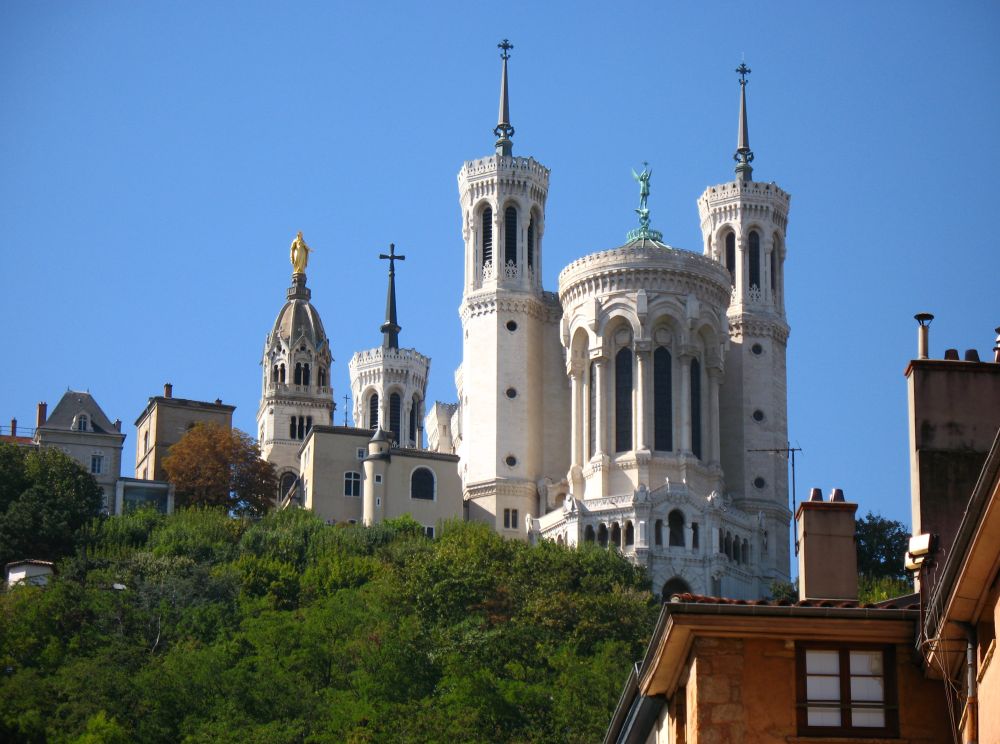

The Basilica of Notre-Dame de Fourvière, perched atop Fourvière Hill, is more than just a landmark in Lyon; it is a symbol of the city's spiritual and cultural heritage. Its history dates back to the 19th century when the Franco-Prussian War of 1870-71 was raging. The people of Lyon vowed to build a church if their city was spared from the war. With Lyon emerging unscathed, the basilica was constructed as a token of gratitude. Construction started in 1872 and was completed in 1884. Since then, the basilica has stood as a testament to the city's resilience and collective faith.
The architecture of the Basilica of Notre-Dame de Fourvière is a blend of Gothic and Byzantine styles, creating a visually stunning structure that dominates the city skyline. Designed by architect Pierre Bossan, the basilica features intricate mosaics, stained glass windows, and a variety of aesthetically appealing artifacts that have attracted visitors from around the world. This ecclesiastical marvel, with its four octagonal towers and gilded statue of the Virgin Mary, is a beacon of Lyon, offering spiritual solace as well as a panoramic view over the city.
Tourism at the Basilica of Notre-Dame de Fourvière has been a key component of Lyon's cultural landscape, attracting pilgrimages, history buffs, architectural enthusiasts, and tourists alike. Open access to the church and its museum, coupled with guided tours, provides an immersive experience into its history, arts, and religious significance.
The basilica also hosts the annual Festival of Lights, which sees the city of Lyon transformed with stunning light installations. This draws countless visitors who partake in the festivities and often start their journey at the basilica, illuminating the edifice in a spectacular fashion.
Accessibility to the basilica is facilitated through a funicular railway that ascends Fourvière Hill, though visitors may also hike up the hill for a more scenic route. Apart from the main basilica, the site also houses a museum, a gift shop, and a panoramic viewpoint from the terrace where tourists can soak in the majestic views of Lyon.
Recent developments have improved visitor experience by adding amenities like café terraces and better informational signage, catering to a wide range of tourists and further cementing the basilica as a must-visit destination on the Lyon tourism map.
In recent years, Lyon's tourism trends have seen a shift towards more sustainable and responsible travel practices, with a focus on local experiences and cultural immersion. Visitors are encouraged to explore the city's historical districts, local cuisine, and artisanal crafts, alongside their visit to the Basilica.
With the global pandemic creating a significant impact on travel, the basilica adapted by offering virtual tours and online masses for those unable to visit in person. As travel returns to pre-pandemic levels, the Basilica of Notre-Dame de Fourvière continues to be an iconic destination, reflecting the evolving nature of tourism and the enduring spirit of Lyon.